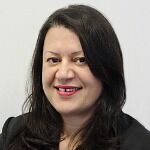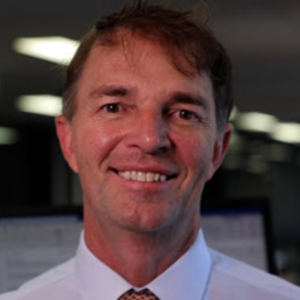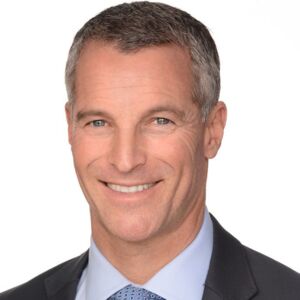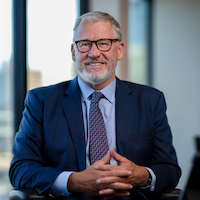First Nations Foundation: bridging the gap between the finance sector and Indigenous Australians
By Kate Neilson

For Amanda Young, it was Atticus Finch who truly made an impact on her life, inspiring her to become a criminal defence lawyer. After gaining experience in the indigenous litigation space, she had no hesitation in taking on the CEO role of the First Nation Foundation, Australia's only charity working towards achieving financial literacy for our nations' first people. She tells Industry Moves her motivation behind the job, what it was like growing up as a jazz musician's daughter and her very mild superpower.
"One participant found $750,000 in a defined superannuation fund at our event, and went from a $20,000 old age pension to a $60,000 annuity that very day." Amanda Young - CEO First Nations Foundation
Q&A with Amanda Young
What lead you to your role as CEO of First Nations?
I have worked for 20 years in the Indigenous space. Initially I was a criminal defence lawyer, then I moved to strategic Indigenous policy, litigation and in my last role I was a coach to Aboriginal entrepreneurs. There was one role in particular that made me want to take the CEO job at First Nations; in 2000 I was a strategic adviser to the Queensland Government on the Indigenous Stolen Wages litigation. The full extent of the control of Indigenous labour and wages became apparent to me, especially the withholding of Indigenous wages by the government. When I was offered the job to run the Foundation it felt like closing a circle, being able to help teach our First Nations people the money management skills that they had been denied for two centuries. It is highly rewarding work.
You say that 43% of Indigenous Australians are either fully or severely financially excluded. What measures are First Nations putting in place to lower this percentage?
At First Nations Foundation we see ourselves as the "bridge" helping the financial sector and Indigenous community reach each other. We have built offerings to enable this financial inclusion to date but we have hopes to grow even more. They include:
* Banking: Back in 1999 the First Nations Foundation partnered with a credit union to start to build the first targeted portfolio of Indigenous banking accounts (loans and deposits). We grew this to over $200M by 2012, bringing real financial products and services to change people's lives. However, the Foundation realised the financial literacy skills of First Nations people needed urgent attention so we created our adult financial literacy training program My Moola which we have been delivering around Australia with great success.
* Superannuation: Another (and award-winning) strategy that we introduced in 2014 was a superannuation outreach event called the Big Super Day Out. Recently held in Redfern, Sydney on June 2016, we brought the superannuation industry to the Indigenous community to sort out their superannuation needs (lost super, contributions, consolidation, insurances, claims). One participant found $750,000 in a defined superannuation fund at our event, and went from a $20,000 old age pension to a $60,000 annuity that very day. There is now interest for us to grow this event in Melbourne (late 2016/early 2017), Brisbane (July 2017) and Cairns (July 2017) if superannuation trustees and administrators are interested in sponsoring its growth.

How many superfunds, that you know of, collect ethnicity or indigenous data?
I am fairly confident that no superfunds collect ethnicity nor Indigenous data for two reasons: I have asked them and to date none have this information, and secondly all researchers in the Indigenous superannuation space complain of the lack of any data to help guide them to research areas like comparing retirement adequacy balances from the mainstream to the Indigenous. Since the CMSF conference in March 2016 I have been calling on the superannuation sector (trustees and administrators) to start collecting ethnicity data. It makes sense to get to know your members better and find out where they learn valuable information on how to improve their retirement futures.
What are your goals with First Nations over the next 12 months?
In the next 12 months the Foundation has secured some exciting opportunities to deliver more training and research on the effects that our money management training program has on diverse areas such as gambling and health. We would like to create more bespoke training products such as a Youth My Moola program and a scaled train-the-trainer model to embed Money Aunties and Uncles into communities. We need pillars of knowledge in community to start flourishing and we want to create communities of learning to help support these trainers. As with all things, this requires money and we are actively seeking investment from the financial sector to help us change wider audience's lives.
Do you find that superfunds are starting to express an interest in better understanding their relationship with Indigenous consumers?
One of the bright spots of my first year as CEO has been witnessing the enthusiasm of the superfunds in the Indigenous space. The Indigenous Superannuation Working Group has been operating for 2 years and has created outcomes such as the AUSTRAC which provides guidance on more flexible identification processes for Indigenous Australians (featured at the Financial Services Council Leaders Summit in July 2016). There has been a surge of interest for corporate Reconciliation Action Plans in the superannuation sector, which until mid-2016 had only one sole trustee taking this step. (RAPs are a tried and true way for corporate Australia to embed the value-add of Indigenous diversity to their business and can result in enormous growth, from employment opportunities to greater market exposure.) On November 4 2016 there will be an Indigenous Superannuation Summit in Melbourne which is the focus event for superfunds to learn more about Indigenous consumers. (Contact AIST for more information.) Finally, I think the 38 disappointed super volunteers that we had to turn away due to oversubscription of volunteers for our Sydney Big Super Day Out event is probably the best statistic I can give you to demonstrate how motivated people in the superannuation industry are in this space. We hope to be able to harness all of your expertise and goodwill to share with the community in the year to come.
In a recent article you said there is an "untapped market of 237,000 marginalised Indigenous people." In your opinion, what can superfunds and other financial services firms do in order to be more inclusive?
Four things:
* Get to know your Indigenous customers. If you don't know who they are, ask. Allow people to opt in and identify themselves.
* Make your products and services accessible. Do you have any photos or images of Indigenous Australians in any of your marketing collateral? Do you make your processes easy for someone who lives in remote Australia to use, including reasonable timeframes to allow them to wait for their doctor to visit (the Royal Flying Doctor Service)? How easy are your hardship, insurance and death claim processes for the people most needing to access them?
* Reach out. Invest in outreach opportunities to work with Indigenous consumers like our Big Super Day Out, especially in regional and remote Australia where half of all Indigenous people live. For example, QSuper travelled to far north Queensland and had lines out the door of people needing support to sort their superannuation, indicating the level of demand for practical help.
* Start your superfund Reconciliation Action Plan. All of the above can be embedded in your superfund, bringing rewards to your staff, achieving CSR outcomes and having a more diverse fund.
Where did you grow up?
I am the daughter of a jazz musician so although I was born in Brisbane, I lived in Sydney, Melbourne, Townsville, Rockhampton, Cairns, Gold Coast and Mount Martha. Wherever there was a paid gig, that's where we lived. I completed my schooling and law degrees in Brisbane and will always consider myself a Queenslander, particularly at State of Origin time and when the Brisbane Lions are playing well.
Who has had the biggest influence on your life/career?
Atticus Finch. I wanted to become a lawyer when I read To Kill a Mockingbird by Harper Lee. Although a fictitious character, his willingness to stand up for fairness in a racial setting resonated strongly with me as a young girl. I have always had an equality utopian view of the world and I won't rest until that wonderful day when I see our First Nations people self-determined, proud and living rich, free lives.
What's the best advice that you've received?
There is always someone in the world better at something than you and something that you are better at than the rest of the world. It taught me humility, admiration towards the talents of others and a belief that we all bring special gifts to this life.
Do you have a hidden skill/talent?
I have a Very Mild Superpower, when I walk past streetlights they often turn off/on. Otherwise I am a painter and can still do the splits.



